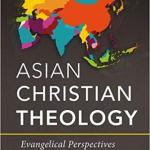Nicholas Perrin
Jesus the Priest
Grand Rapids, MI: Baker, 2019.
Available at Baker Academic.
Nicholas Perrin (Wheaton College) has completed the second volume of his trilogy of books about Jesus. The tirst one was Jesus the Temple and the next one will be Jesus the Sacrifice. In Jesus the Priest, Perrin offers a new paradigm for understanding the historical Jesus as a self-consciously priestly figure. Perrin challenges the standard anti-cultic and anti-clerical reading of classic texts (e.g. the Lord’s Prayer, Parable of the Sower, the Beatitudes, etc) to argue that the historical Jesus identified himself not as sage or prophet but as Israel’s eschatological high priest. In addition, it is as the priest that Jesus claims to reveal God’s unchanging character through his own person and he announces the impending climax of God’s eschatological purpose, constituted by the arrival of the heavenly temple on earth. For Perrin, Jesus’s priesthood exhibits a mediating understanding that sheds crucial light on the kingdom of God.
I remember during my doctoral studies realizing that several episodes in the Gospels had a distinctly cultic or priestly feel about them. For instance, Jesus appealing to David and his companions eating the bread of the presence in the days of Abiathar (Mk 2:26) and Jesus citing Ps 110 which mentions Melchizedek (Mk 12:35-37). I was going to follow this up with a research project, but after Crispin Fletcher-Louis wrote some articles in JSHJ on the same thing, quite ably too, I didn’t see the point anymore. But I’m glad to see that Perrin has taken up the idea of a priestly Jesus and prosecuted the thesis with exceeding rigor. It is a testament to an anti-clerical hermeneutic usually by protestants or secular scholars that this aspect gets overlooked.
Perrin aims to show that Davidic restoration has a number of “cultic entailment” and “important as Jesus’ royal messianic aspect may be, the evidence suggests that he subordinated his royal identity to his primary identity as priest. Jesus sought to implement not a theocracy but a hierocracy under the God of Israel” (7). Perrin sees in each petition of the Lord’s Prayer an allusion “to a different aspect of a single eschatological reality, all centered around a new consecrated priesthood and sacred space” (52) so that the prayer was “the oral charter for a new eschatological priesthood, which was in the process of being formed under Jesus not on the basis of genealogical descent but on his call” (53). Perrin detects allusions to priestly themes from Psalm 2 and Ezekiel 36 pertaining to Jesus’ baptism. The largest chapter on Jesus’ teaching about the kingdom brings to the surface Ezekielian themes of restored cultic spaces, new priesthood, cleansing, and issuance of the Spirit (140). If Jesus did think he was the Son of David, then part of his task was to install “a monarchic hagiocracy” with himself somewhere in the mix. Perhaps the most intriguing and profitable chapter pertains to Perrin’s argument for the priestly connotations pertaining to “the one like a Son of Man” in Daniel 7. For Perrin, Daniel’s SM is “symbolically rendered as Israel’s eschatological high priest” (167) and for Jesus the SM functioned as a “coded template for himself and his movement” (236). In other words, for Jesus, the SM was “not a title but a story” (238). Perrin points out that imperial coinage of the day portrayed Emperor Tiberius as Pontifex Maximus (high priest) which Jesus seems to disparage in Mk 12.13-17. Then, concerning Mk 14:62, Perrin sees the echoes of Dan 7 and Ps 110 as connected by the theme of a priestly figure who defeats God’s enemies. In the end, Perrin believes that Jesus launched a counter-temple movement that was a liturgical movement, an itinerant movement, and an inclusive movement. And, to give a hint at his forthcoming book, Perrin declares “A humanity shaped for service in the guild of eschatological priests could only emerge through the crucible of the fully God-honouring life. Thus for Jesus, atonement was not so much a singular act of self-giving but a divinely ordained process by which Jesus’ true humanity would come into full expression and realize its full potential. Just as in ancient Judaism atonement was assumed to be ineffective apart from the perfection of the priest, so too the fullness of humanity was inconceivable apart from atoning self-surrender” (287).
The strength of this book is that it brings to the surface the priestly and cultic text of much material in the OT, STJ, and the Gospels. Also, Perrin rightly points out that Davidic and priestly categories overlapped, Jesus led a counter-temple movement which by implication had to be a type of counter-priestly movement too, how Jewish restoration eschatology meant restoration of the temple, the combination of ethics and eschatology, and it explains the application of priestly metaphors and images used for Jesus in the Pauline letters and Hebrews.
That said, I do worry that Perrin is trying to make something that is a thematic leitmotif (priesthood) to be the orchestra (driving apparatus) of the self-conception and mission of the historical Jesus – I’m not sure on that one. Also, I’m left thinking that not everything cultic should be construed as priestly. Plus, individual interpretive decisions he makes were not always convincing, e.g. Perrin’s view of Mk 2:9 about declaring the forgiveness of sins making Jesus a priest and his interpretation of Jesus’ response to Caiaphas in Mk 14:62 as priestly rather than a claim to be co-enthroned with YHWH.
Sadly, books on the historical Jesus are fairly rare these days, so this is a welcomed publication, a stimulating and informative read, and we can earnestly look forward to Perrin’s completion of his trilogy in the next volume Jesus the Sacrifice.












